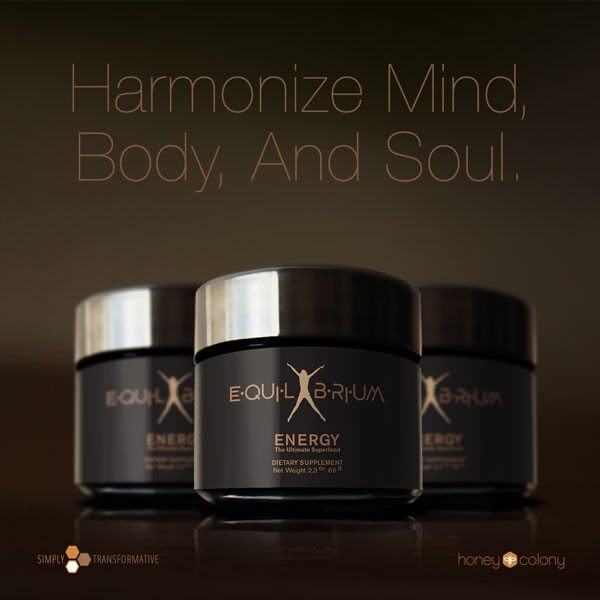Sharing is caring!
The case for raw honey improving gut flora just got sweeter.
A new report out of the University of Auckland further establishes raw honey as a prebiotic to help balance our gut microbiota while promoting healthier cholesterol levels, improved digestion, higher immune function, lower risk of weight gain, lower inflammation, and lower risk for cardiovascular disease.
According to the report:
“Raw honey contains oligosaccharides that can be utilized by the saccharolytic fermenters to yield beneficial metabolites that promote the prebiotic effect.”
Oligosaccharides are sugars that can serve as a fuel source (prebiotic) for beneficial bacteria in our guts.
“Raw honey also contains small amounts of polyphenols, which can both protect good bacteria and displace bad bacteria,” says Salt Lake City nutritional biochemist Shawn T. Talbott. “So the overall effect of adding a little honey to your diet is a positive rebalancing of the bacterial ecology in your gut, which can lead to other positive health benefits, especially in the area of mental wellness.”
Prebiotics – Food That Feeds Beneficial Microbes
While probiotics have become more widely known in recent years, prebiotics still remain widely misunderstood. Probiotics are live beneficial bacteria that are introduced into our guts through supplements and foods. Prebiotics provide the food that helps beneficial microbes flourish.
Prebiotics were first identified and named by French professor of pharmaceutical sciences Marcel Roberfroid in 1995. Roberfroid’s definition of prebiotics goes something like this: A prebiotic is a selectively fermented ingredient that allows specific changes in the gastrointestinal microflora that confers benefits upon host well-being and health.
By definition, prebiotics are a type of non-digestible fiber compound.
“We used to think that fiber only benefited our bodies because it made up the ‘bulk’ in our stool,” says New York integrative pediatric neurologist Dr. Maya Shetreat-Klein.
But it turns out that the fiber that makes up prebiotics, which cannot be digested by us, is the perfect food for certain beneficial bacteria in our guts. It’s essential to keep these beneficial bacteria adequately supported so that they remain active in quantity within our guts.
As prebiotics make their way through the stomach without being broken down by either gastric acids or digestive enzymes, they bring about positive changes in the digestive tract and organs.
“Raw honey has so many benefits,,” says Shetreat-Klein. “This includes immune-modulating pollen and phytonutrients, as well as the prebiotic fiber components.”
The ability of honey to serve as a prebiotic has been examined in cell cultures and in mice. A research project funded by the National Honey Board found that Bifidobacteria cells, a strain of bacteria often found in the intestines, grew more rapidly when raw honey was added to their food. A 2006 article in Complementary and Alternative Medicine also found that feeding honey to mice increased the levels of healthy bacteria in their guts.
A human clinical study led by microbiology and immunology specialist Patricia Conway of the University of New South Wales (UNSW) found that raw honey can significantly raise the levels of good bacteria and suppress potentially harmful bacteria in the digestive tract.
“Furthermore, levels of good bacteria decreased once the participants stopped taking the honey for a period of time,” says Conway.
Joy Stephenson-Laws, founder of Proactive Health Labs pH, a national non-profit health information company, says two strains of bacteria, Lactobacillus and Bifidobacterium, are particularly partial to prebiotic raw honey.
“There are studies that suggest that Lactobacillus strains have been reported to improve diarrhea in children,” says Stephenson-Laws. “Increased Bifidobacterium in the gut was positively correlated with improved glucose tolerance.”
According to Stephenson-Laws, several studies have also shown that Bifidobacteria can reduce systemic inflammation and subsequently reduce the incidence of diabetes.
Says Shetreat-Klein:
What’s most interesting is that prebiotics in general — and prebiotic raw honey in particular — cause the beneficial microbes to produce compounds that inhibit the growth of dangerous bacteria.
Not All Honey Is Honey, Honey
Prebiotic honey does not include commercial brands of honey you are most likely to encounter in grocery stores. Commercial grade honey is normally heavily processed during pasteurization, which destroys many vitamins, minerals, amino acids, and enzymes. Tests show some brands are also out and out fakes with little pure honey content.
In the film Vanishing of the Bees, directed by HoneyColony cofounder Maryam Henein, “funny honey” is established as more common than we think. “Honey blends” are imported from other countries and contain adulterants such as lactose syrup — made from milk — high fructose corn syrup, beet sugar, and even chloramphenicol, which is an antibiotic.
The Palynology Research Laboratory at Texas A&M University tried 60 honey items from markets and supermarkets and found that 76 percent contained no hint of pollen, which also has nutritional benefits.
Raw, on the other hand, is a superfood. While it may be lightly filtered, it is unheated, unpasteurized, and unprocessed. In addition to being a proven prebiotic, raw honey has a s including getting rid of coughs, healing wounds, promoting digestion, fighting diabetes, and warding off allergies.
“If you have immune responses to bits of mold and dust, organic honey can strengthen your immune system and help you handle those things better,” says nutritional expert J.J. Virgin.
However, it’s important to remember that even pure raw honey has its limitations. It shouldn’t be fed to children under 12 months, and it needs to be consumed in moderation.
“Honey is still a concentrated source of sugar,” says Talbott. “Too much sugar can actually be detrimental to our microbiome.”
Nutritionist Dr. Keith Ayoob agrees:
As a nutritionist, I always tell people that honey has calories – about 60 in a tablespoon – so limiting it is wise. That said, spend your honey calories wisely. Instead of just downing it from a spoon, use it to flavor foods like plain yogurt and in smoothies. A tablespoon is enough, then move on.
Raw honey can be difficult to find unless you know a beekeeper who sells it direct from his hives. You might also want to check the National Honey Board, which can help locate raw honey venders in your location.
Equilibrium – Superfood Packed With Raw Honey
Or you can try , a superfood supplement that has raw honey as one of its main ingredients along with bee pollen, , and .
This is a unique mixture that provides prebiotics as well as other health benefits such as antioxidants (royal jelly), anti-bacterial capabilities (propolis), and boosts the immune system (bee pollen).
Recommended usage is 1 teaspoon a day on an empty stomach or blended into a smoothie.
Click Here To Get Raw Prebiotic Honey Along With 17 Other Key Ingredients For Endless Health Benefits From The Bees!
Double Down With Probiotics
Prebiotics feed probiotics; probiotics help balance the gut flora with healthful bacteria.
By pairing them together, you can achieve even better results, according to Shetreat-Klein.
“Your microbiome will get an extra boost,” says Shetreat-Klein. “It may be a good idea to take them at least a couple of hours apart, though, because antimicrobial components of honey might also attack some of the beneficial bacteria.”
There are excellent probiotic foods such as fermented foods that contain live cultures and have not been pasteurized, since pasteurization kills the beneficial bacteria. Good choices include sauerkraut, kimchi, coconut kefir, and kombucha.
There are also probiotic supplements that introduce live beneficial microbes into your digestive tract and help improve your . It’s important to use probiotics that survive stomach acids. offers the only all natural probiotic and antioxidant combination product that 100 percent survives the harsh conditions of the stomach and arrives alive in the small intestine to get to work for you.
Probiotics benefit digestion and general metabolism. A new class of probiotics called specifically delivers mental health benefits including reducing symptoms of depression and anxiety, lowering stress reactivity, improving memory, and even lessening neuroticism and social anxiety. Certain strains of probiotic bacteria such as Lactobacillus helveticus and Bifidobacterium longum are considered psychobiotics for their ability to improve mood. Psychobiotic supplements are still difficult to find, but probiotic contains Bifidobacterium longum and Lactobacillus strains — gut bacteria that especially enjoy feasting on raw honey.
The Blessed Bees
Prebiotic raw honey is yet another health gift from the bees. For their survival (and ours) we should be doing everything we can to promote the proliferation of these critically important pollinators. Tragically, just the opposite is happening. In recent years, honeybee populations across the continent have plummeted an estimated 70 percent. Some are now appearing on the Endangered Species List.
Loss of habitat and especially inordinate systemic pesticide use are the two main reasons for bee decline. After the Second World War, pesticide use increased 50-fold. With so many chemicals leftover, manufacturers decided to take the poisons meant to kill humans and wage an eternal war against bugs instead.
These chemicals were cheap, deadly, and enormously popular. For instance, when DDT was discovered as an effective insecticide, it was welcomed and even embraced as a solution against malaria and typhus. While making the documentary Vanishing of the Bees, director Henein discovered footage of chemical trucks rolling through the streets engulfing people with clouds of the stuff. Their slogan was even “DDT is Good for Me.”
DDT was banned, but scientists warn that the current crop of toxic pesticides known as neonicotinoids are 5,000 to 10,000 times more toxic to bees than DDT. These “neonics” are the cash cows for giant corporations like Monsanto () and .
In an article that appeared in Environmental Science and Pollution Research, scientists reported that these so-called systemic pesticides are absorbed into a plant’s roots, stems, leaves, flowers, pollen, and nectar. Farmers can spray plants with neonics, but seeds are now routinely treated with the chemical, meaning that as the plant grows the pesticide remains part of the flora.
“The combination of persistence (over months or years) and solubility in water has led to large scale contamination of, and the potential for accumulation in, soils and sediments, ground and surface water and treated and non-treated vegetation,” the scientists wrote. “The effects of exposure to neonics range from instant and lethal to chronic. Even long term exposure at low (nonlethal) levels can be harmful.”
Would it surprise anyone if Big Pharma was working on a synthetic (expensive) honey pill to take the place of real honey produced by real bees?
Don’t let this happen. Join efforts like Save The Bees and Beyond Pesticides.
 Thomas Ropp Longtime journalist Thomas Ropp is an environmental advocate and proponent of living healthier. After spending most of his life in Arizona, he relocated to a Costa Rican rainforest 11 years ago and helped with reforestation projects to expand the habitat of the endangered mono titi monkey. He has dual residency in the United States and Costa Rica.
Thomas Ropp Longtime journalist Thomas Ropp is an environmental advocate and proponent of living healthier. After spending most of his life in Arizona, he relocated to a Costa Rican rainforest 11 years ago and helped with reforestation projects to expand the habitat of the endangered mono titi monkey. He has dual residency in the United States and Costa Rica.
Submit your story or essay to Buzzworthy Blogs.


